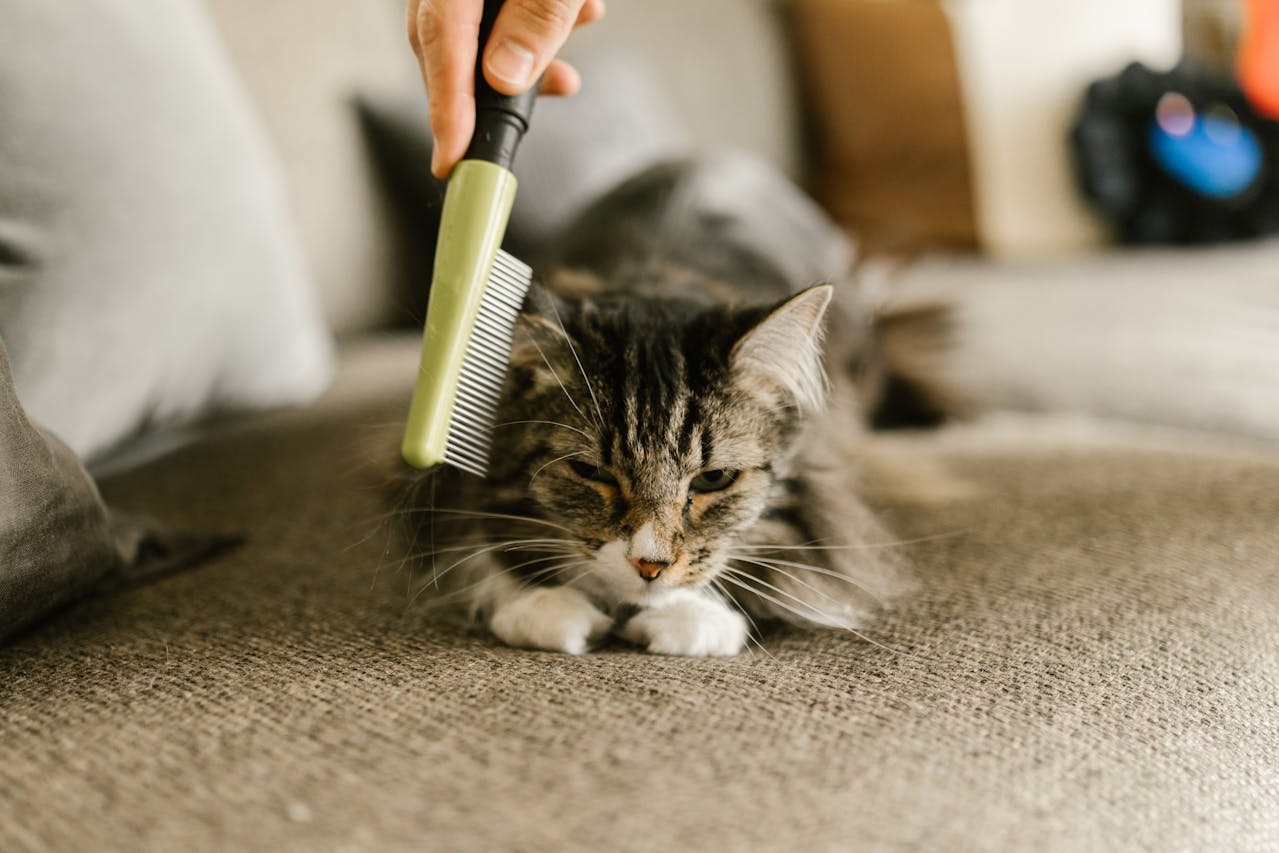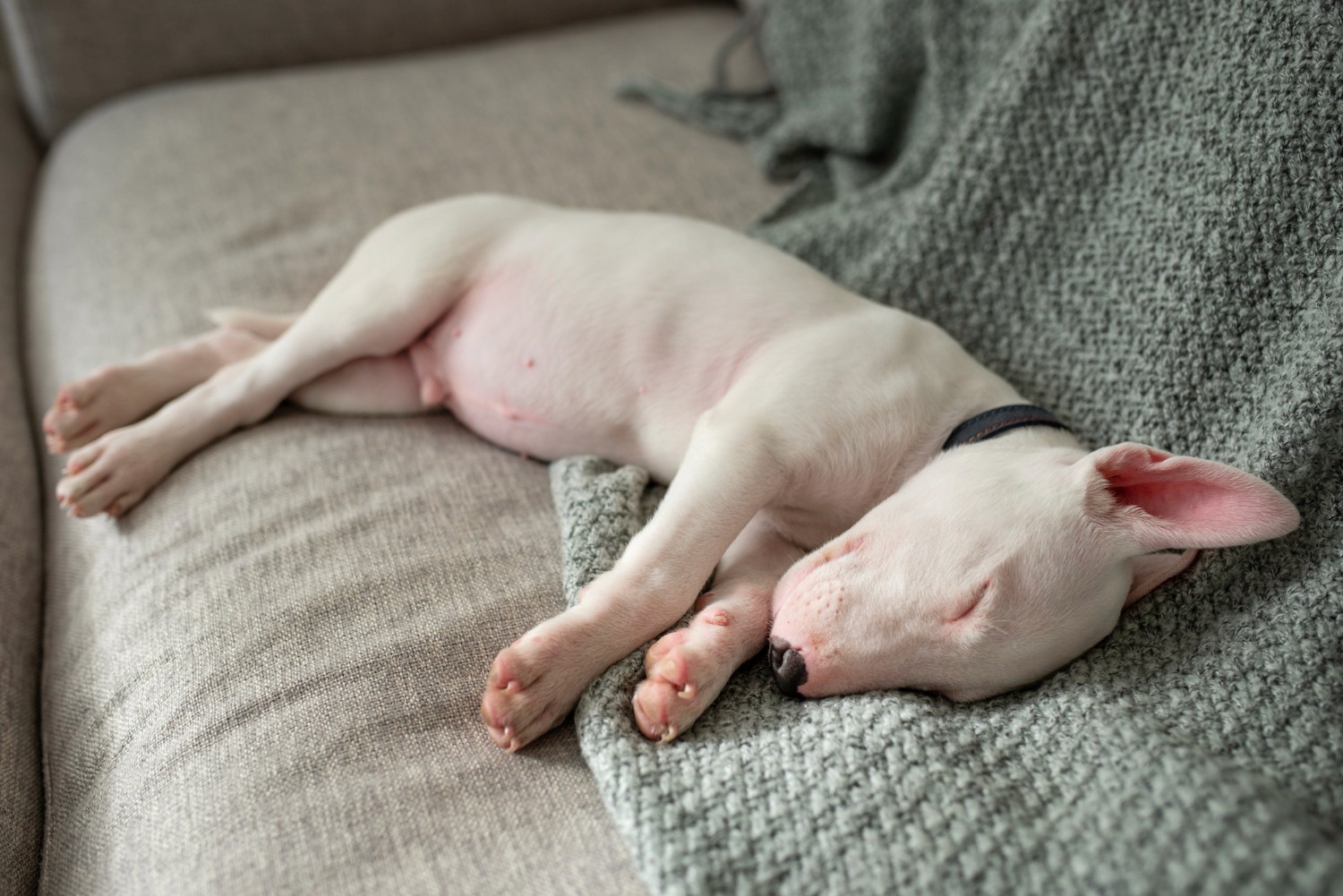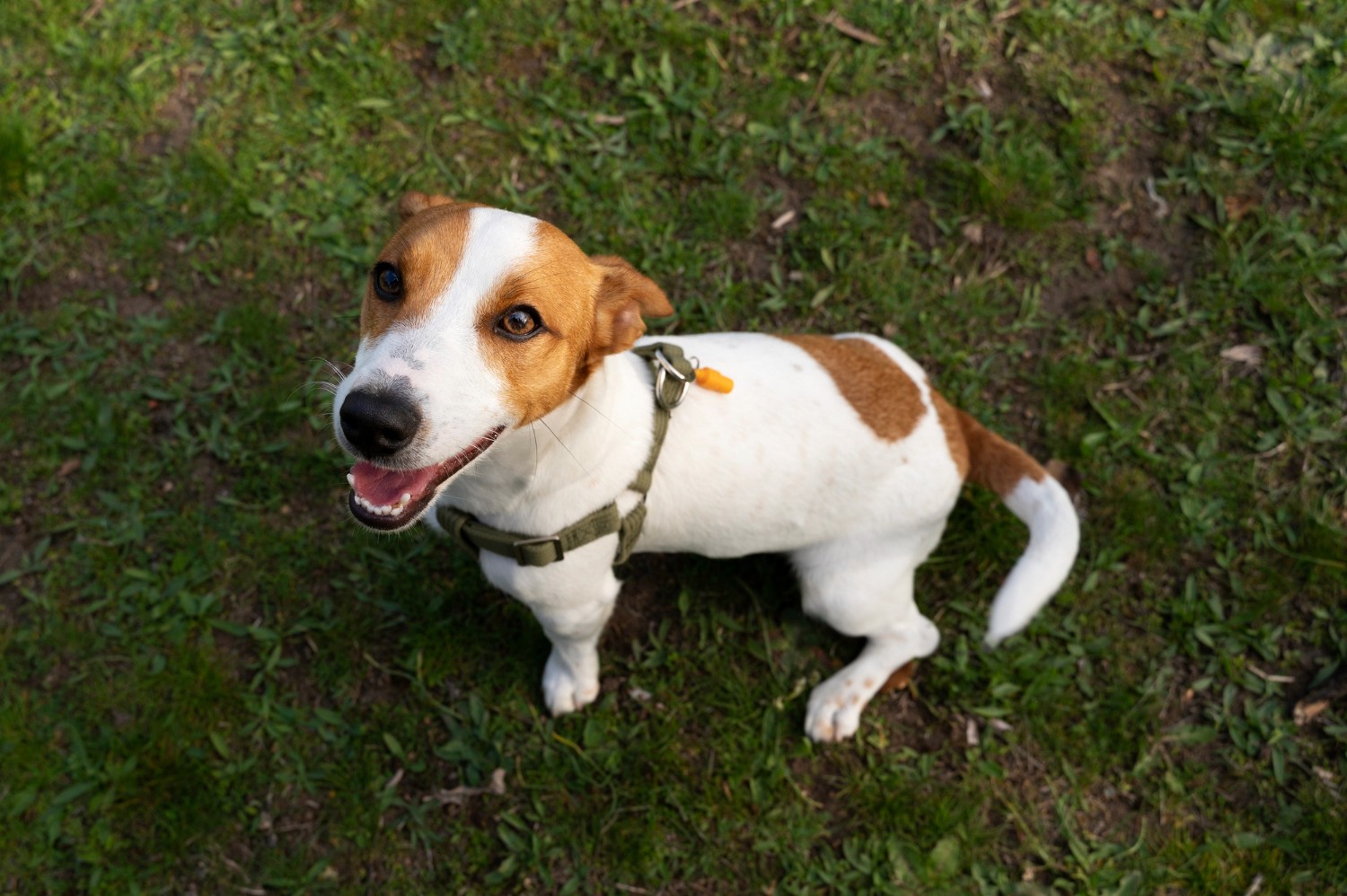Dogs
Apr 11, 2025
Red inflamed paws on dogs indicate something wrong, and they often bring discomfort and pain. This can be concerning, and as a pet owner, you want to keep your dog’s paws healthy and avoid issues in the future.
In this blog, we will discuss some causes of red inflamed paws on dogs, how to treat them, and ways you can prevent them.

Common Culprits Behind Paw Inflammation
You may be wondering, “Why are my dog’s paws red?” Here are possible reasons why:
1. Allergies
Like humans, dogs can have allergies. They can be allergic to various substances, such as pollen, grass, specific foods, dust mites, mould, or household chemicals.
The allergy can manifest in their skin, which would itch. In an effort to soothe their discomfort, you may notice them excessively licking or chewing at their paws, leading to red paws.
2. Foreign Objects and Injuries
Red inflamed paws on dogs can also be an indicator that they stepped on a foreign or sharp object, like small stones, pieces of glass, thorns, or rough surfaces. These elements can cause either irritation or injury.
If you see your dog limping, favouring one leg, or struggling to move normally, inspect its paws. Check for any foreign object that may have gotten stuck between its paws, cuts, scrapes, or puncture wounds.
3. Bacterial and Fungal Infections
Bacterial or fungal infections can trigger red inflamed paws on dogs. Other behaviours you need to watch out for include compulsive chewing or paw licking. A foul smell is a particular symptom of bacterial or yeast infection that may result from oozing pus.
Both bacterial and fungal infections need to be treated by a vet and be prescribed a round of antibiotics. For your dog’s red paws to heal properly, try your best to stop them from licking or chewing at their paws, even if that means putting a muzzle on them or a cone collar for the time being. They may be unhappy during the treatment, but it is for their own good, and the discomfort will soon subside.
4. Parasites: Fleas, Ticks, Mites, and Worms
Parasites can lead to skin irritations and bacterial infections, which may manifest as red, inflamed paws on dogs. Fleas and ticks can cause intense itchiness on the bite site, while mites remain latched on their skin or paws, and worms try to find their way towards your dog’s gut, making the scratching or biting more constant.
As some parasites can be invisible to the naked eye, we strongly advise you to consult your vet before they cause more discomfort or lead to health conditions.

5. Dry Skin
Dry skin contributes to red inflamed paws in dogs due to itching, scabbing, or flaking. It can be caused by harsh grooming products, nutritional deficiencies, rough surfaces, or underlying skin conditions.
Your dog may have been exposed to certain allergens or bacteria, whether eaten or environmental factors. They may also take too many baths, stripping off the moisture from their skin or paws.
6. Extreme Temperatures
Walking on hot or frozen surfaces can cause red, inflamed paws on dogs. These extreme temperatures can also make their paw pads prone to blistering or cracking.
You may notice your dog licking its paws to relieve the burning sensation and soreness. This could give rise to bacterial infections, worsening the redness or inflammation.
7. Ingrown Nails
Ingrown nails are nails that grow inside of the skin instead of outside. If you don't regularly cut your dog’s nails, they may grow too long and curl back into the skin.
The pain caused by ingrown nails can be causing the red, inflamed paws on dogs. They may not be as active as they normally are or limping to avoid putting weight on the paw with an ingrown nail.
8. Boredom and Anxiety
Red inflamed paws on dogs can result from excessive licking or chewing as a response to boredom and anxiety. The bad habit of licking or chewing at their paws may cause bacterial infections or other skin conditions.
When dogs are unable to express their energy or are stimulated, they may develop behavioural problems, including licking and chewing their paws or destroying household furniture.
9. Underlying Medical Conditions
Your dog’s red paws may be a sign of a health issue inside their body. Conditions like autoimmune disorders or hormone imbalances can cause skin irritation, including in the paws. These issues are not as common, but they do happen.
When the immune system doesn’t work as it should, it can start to attack healthy skin, which leads to redness, swelling, or sores. Hormonal problems, such as thyroid issues, can also affect the skin by making it dry or more likely to get infected. In both cases, the paws might look sore, and your dog may lick them often. You might also notice other changes, like fur loss, low energy, or skin problems in other areas.

How to Know If Your Dog’s Paws Need Help
Your dog’s paws can tell you a lot about how they’re feeling. If something seems off, it’s often a sign that they need support or care. You don’t have to guess—there are clear signs to look for.
Constant Licking, Chewing
If your dog keeps licking or chewing their paws, it’s usually because something is bothering them. This is one of the first signs many pet owners notice. It can mean the paws are itchy, sore, or painful.
Sometimes, this behaviour starts slowly—maybe after a walk or during rest time. Dogs will often try to soothe themselves this way, even if it makes the problem worse. Keep an eye on when they do it and how often. If it’s happening a lot, their paws likely need some attention.
Redness or Swelling of Paws
Red or puffy paws are clear signs of irritation or inflammation. If the skin looks pinker than usual or the paw seems swollen, it means the body is reacting to something. It could be an allergy, an injury, or an infection.
Check the tops and bottoms of their paws, between the toes, and around the nails. Swelling might be slight at first, so comparing it with the other paws can help. A gentle touch test can also let you know if the area feels warmer than normal or if your dog pulls away.
Foul Odours
A strong or strange smell coming from your dog’s paws can be a sign of infection. Healthy paws don’t usually smell bad. If you notice an odour that sticks around, especially with licking or redness, it’s time to look more closely.
Bacterial or yeast infections often cause a sour or musty smell. These infections can start from small things, like too much moisture, allergies, or minor cuts. If the smell is paired with discharge or the skin looks irritated, your dog may need treatment. Don’t wait too long, as paw infections can worsen quickly if not treated early.

Limping or Avoiding Weight on One Paw
If your dog is limping or not putting weight on one paw, it usually means they are in pain or uncomfortable. This is a strong sign that something is wrong with that paw. It might be due to a cut, swelling, or something stuck between the toes.
Limping may come and go, but it should never be ignored. Your dog may try to shift its weight or walk differently to avoid pressure on the sore paw. Sometimes, they may even stop playing or walking altogether.
Cracked Paw Pads
Cracked paw pads can be painful and make walking uncomfortable for your dog. You might see rough, dry areas or even small splits in the skin. These cracks can happen from walking on hot surfaces, cold weather, or dryness over time.
When the pads lose moisture, they become brittle and more likely to break open. This can lead to infections if dirt or bacteria get into the cracks. Your dog may also lick the area more, which can slow healing.
Fur Discolouration
If the fur around your dog’s paws has turned brown or reddish, it could be a sign of frequent licking. Saliva can stain light-coloured fur over time. This is often a clue that your dog has been licking the area more than usual, even if you haven’t noticed it happening.
Fur discolouration doesn’t cause pain, but it shows that your dog has been dealing with something uncomfortable. It might be allergies, irritation, or early signs of infection.
Home Remedies to Treat Red Inflamed Paws on Dogs

When you notice your dog’s red paws, it’s best to treat them immediately. Here are some home remedies you can try:
Clean Your Dog’s Paws
Clean your dog’s paws with warm water and use dog-friendly soap or shampoo to remove any dirt or irritants that may be causing the red paws. Remember to rinse thoroughly, because any leftover soap or shampoo residue can make the problem worse.
Moisturise with Coconut Oil
Coconut oil is a remedy and preventive measure for red, inflamed paws on dogs. It can moisturise dry and irritated skin while warding off parasites. The best part about coconut oil is that it’s organic, so you don’t have to worry about your dog ingesting it. Apply a small amount to your dog’s paws and massage them gently.
Oatmeal Baths
Oatmeal baths can soothe irritated skin, relieve itchiness, and treat red, inflamed paws on dogs. All you have to do is run a warm bath and add plain oatmeal to the water.
Epsom Salt Baths
Epsom salt promotes healing while relieving discomfort. Dissolve a tablespoon of Epsom salt in a basin of warm water and soak your dog’s paws for 5-10 minutes daily. This can help remedy red paws from irritation or inflammation.
Cold Compress
Cold compresses can help reduce itchiness, swelling, and pain. Apply a cold compress to your dog’s red paws daily until inflammation or irritation subsides.
Apple Cider Vinegar (Diluted)
Diluted apple cider vinegar has natural properties that may help fight mild infections and reduce irritation. Use it only if there are no open cuts or wounds. Combine equal parts apple cider vinegar and water. Soak your dog’s paws in it for a few minutes or use a clean cloth to gently dab the solution on the affected areas. If your dog reacts by pulling away or seems uncomfortable, rinse the area with clean water and stop using it.
When to See a Vet?

While home remedies may work for mild issues, consult a vet if:
Paws are bleeding, swollen, or oozing
Licking/chewing is compulsive and worsening
You suspect a foreign object or parasite
Redness persists beyond a few days
You observe signs of pain, lethargy, or behavioural changes
Note that the causes and treatments of red inflamed paws on dogs listed above are not exhaustive. Your dog may have red paws for other reasons, such as diseases. And if the redness continues despite trying the home remedies, it’s important to consult a veterinarian.
For instance, if your dog has a bacterial infection, your veterinarian may prescribe the right antibiotics or recommend antibacterial shampoos for treatment.

Preventing Your Dog from Getting Red Paws
Prevention is always better than cure. Here are some preventive measures to spare your dog from the pain and discomfort of red paws:
Check Your Dog’s Paws Regularly
Regularly check your dog’s paws, especially after they’ve been outside. See if they’ve stepped on anything and remove foreign objects that may have gotten stuck in between their paws.
Keep Your Dog’s Paws Clean
Your dog might be playing in the mud, running around the sand, or simply playing outdoors. Wash your dog’s paws after spending time outside and before entering the house to prevent bacteria or viruses from staying in their paws. Rinse their paws with warm water.
Establish a Consistent Dog Grooming Schedule
It’s essential to establish a consistent dog grooming routine to prevent red paws from happening. Besides giving them a shower, you also need to brush their teeth, and trim their nails and fur to avoid ingrowns that may lead to inflammation or infection.
Avoid Harsh Weather Conditions
Since extreme temperatures can burn your dog’s skin and cause red paws, avoid taking them for a walk when the ground is either too hot or cold. During the summer, opt for early morning or late night walks instead of mid-afternoon. In the winter, consider protective or ointment to safeguard their paws from the ice, chemicals, and other irritants on the ground.
Feed a Balanced Diet
What your dog eats affects how well its body can fight irritation and heal from small injuries. Dogs need the right mix of protein, vitamins, and healthy fats to keep their skin strong and their immune system working properly. A good diet won’t fix every problem, but it gives your dog a strong foundation. When your dog's body is well-fed, it’s better prepared to deal with day-to-day stress, allergies, and skin problems.
Maintain a Healthy Home Environment
Maintaining a healthy home environment will prevent your dog from getting red paws and benefit you in the process. To ensure the safety of both you and your pet, sweep heavy traffic areas to get rid of dust and sharp objects that may have settled on the floor. Also, consider improving indoor air quality by eliminating floating allergens.

Contact The Barking Lot to Keep Your Dog’s Paws Healthy
Dog grooming plays a crucial role in your dog’s overall health and well-being, and part of regular grooming includes nail clipping and paw care. It’s important to keep your dog clean to prevent issues like red paws.
At The Barking Lot, we offer dog grooming services from bathing, brushing, and nail trimming to more specialised treatments such as paw pad moisturising. We can help keep your dog’s paws healthy. We also accommodate dogs in our daycare and hotel, providing them with a safe and friendly environment while you’re away at work or on vacation. Contact us today!
Frequently Asked Questions
Can I use human creams on my dog’s paws?
No. Many contain toxic ingredients like zinc oxide or essential oils that are harmful to dogs.
Are some breeds more prone to red paws?
Yes. Bulldogs, Frenchies, Pugs, and Boxers are prone to skin issues. Short-haired breeds with exposed skin also need more protection.
How often should I inspect my dog’s paws?
Ideally, after every walk. But at least 2–3 times a week if indoors most of the time.
What’s the best first step if I notice my dog’s paws are red?
The first thing to do is gently clean your dog’s paws with warm water. This helps remove any dirt, sand, or irritants that could be causing the redness. Use a pet-safe soap if needed and dry the paws completely.
How often should I check and clean my dog’s paws in the UAE?
In the UAE, it’s a good habit to check and clean your dog’s paws every day, especially after walks. Dust, sand, or tiny stones can easily get caught between the toes or pads. This routine helps prevent irritation and is one of the easiest ways to focus on keeping your pet healthy all year round.





